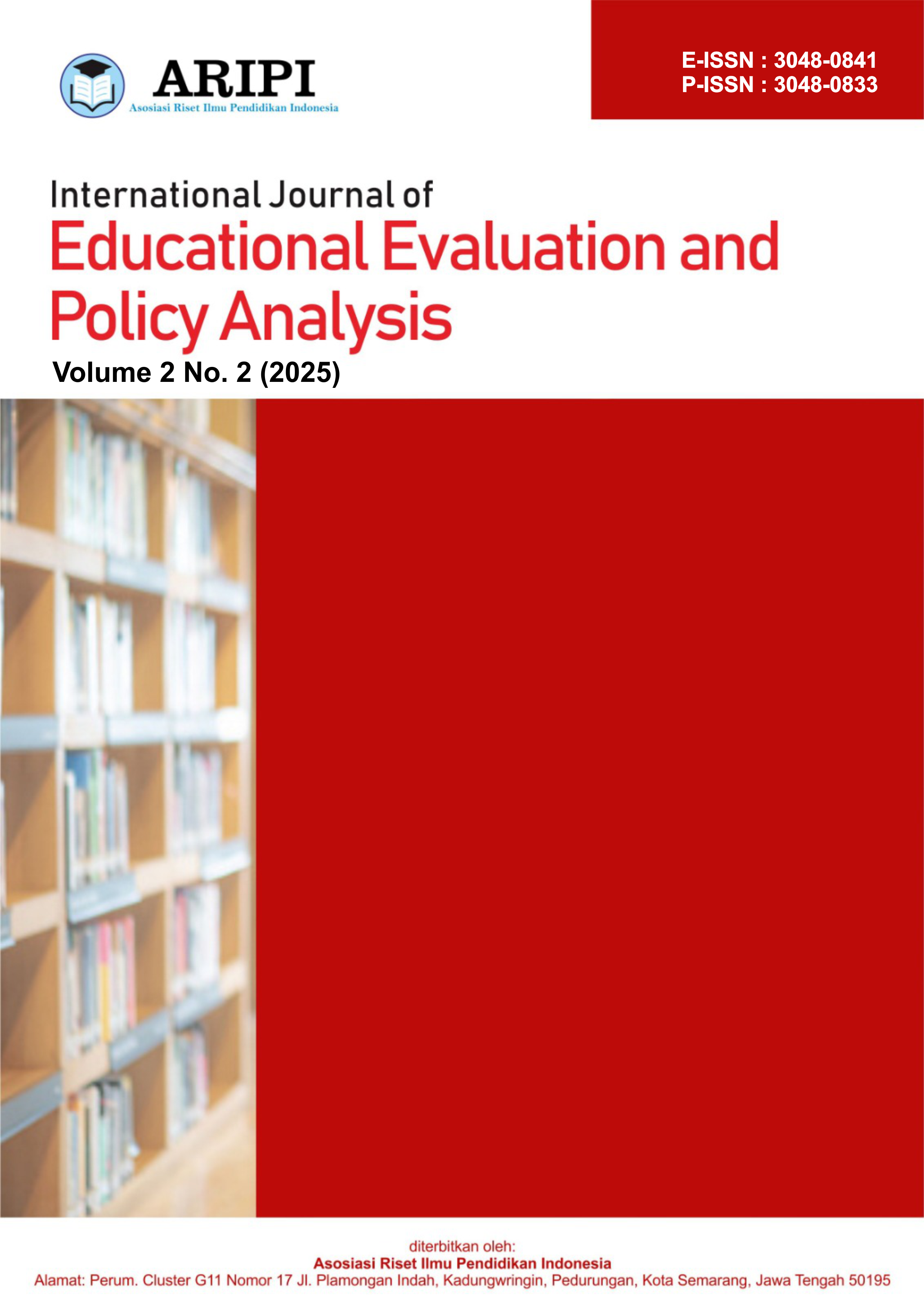Introducing Dayak Culture for Elementary School Students through Huma Betang Philosophical Poems
DOI:
https://doi.org/10.62951/ijeepa.v2i2.243Keywords:
Cultural Values, Dayak Culture, Elementary Schools, Poetry, StudentsAbstract
Dayak culture offers a wealth of noble values that can positively shape the character of elementary school students. This paper aims to: (1) identify the values of Dayak culture contained in the poem "Philosophy of Huma Betang". (2) Explain the method of introducing these cultural values to elementary school students. (3) Describe the effectiveness of using poetry as a medium of cultural introduction. One of the effective methods to introduce Dayak culture to students is through poetry. This article discusses the poem "Philosophy of Huma Betang" by Misnawati as a medium that conveys cultural values in an interesting and easy-to-understand manner for elementary school students. The importance of this research is based on the need to understand and preserve Dayak cultural values. This research uses a descriptive qualitative approach, by identifying the cultural values contained in the poem. The method of introducing cultural values to elementary school students involves reading with expression, discussion, creative activities, and educational visits. The results of the study show that the use of the poem "Philosophy of Huma Betang" is successful in increasing students' understanding and appreciation of Dayak culture. Students show high interest, they can remember well the values learned, and show improvement in language skills and creativity. Educators also give positive feedback on the effectiveness of this method in learning in elementary school classrooms.
References
Anwarsani, A. (2023). Poem "Natural beauty, love journey" by Misnawati for student facilities to love tourist attractions in Indonesia. Protasis: Journal of Language, Literature, Culture, and Teaching, 2(1), 215-228.
Anwarsani, A., Erniwati, E., Mahdalena, M., Apianson, A., Najmi, H., Suwartini, S., ... & Fadillah, H. (2023). Teaching Pancasila through a poem entitled "Pancasila Basic Negara" by Misnawati. Mutiara: Journal of Research and Scientific Works, 1(3), 44-58.
Anwarsani, A., Markiah, M., Muliani, W., Lynet, L., Perasi, P., Salwa, N., & Al Kausar, L. (2023). Phonology in the context of poetry to present interesting and inspiring learning materials. Phonology: Journal of English Language and Literature Sciences, 1(4), 251-263.
Gardner, H. (1983). Frames of mind: The theory of multiple intelligences. Basic Books.
Heath, S. B. (1983). Ways with words: Language, life, and work in communities and classrooms. Cambridge University Press.
Misnawati, M. (2023). Crossing language boundaries through literary and cultural diplomacy. Pedagogic: Journal of Education, 18(2), 185-193.
Misnawati. (2024, March 10). Puisi “Falsafah Huma Betang”. Facebook: Palangka Raya. https://www.facebook.com/photo/?fbid=7909037732468028&set=a.338474016191142
Muriyana, T. (2022). A study of comparative literature: A comparison of imagery and meaning in the poem 'Warning' by Wiji Thukul with the poem 'Caged Bird' by Maya Angelou. ENGGANG: Journal of Education, Language, Literature, Arts, and Culture, 3(1), 122-250.
Nieto, S. (2009). Language, culture, and teaching: Critical perspectives. Routledge.
Santrock, J. W. (2011). Child development (13th ed.). McGraw-Hill.
Saputra, N., Nurachmana, A., Putri, H. A. R., Sidarwati, N., & Sarcie, S. (2022, May). Majas Looping in the teacher's poetry anthology book "About a Book and the Secret of Knowledge" and its implications on literature learning in high school. In Proceedings of the National Seminar on Education, Language, Literature, Art, and Culture (Vol. 1, No. 1, pp. 60-74).
Sitorus, K. S., Purwaka, A., Cuesdeyeni, P., Poerwadi, P., & Mingvianita, Y. (2023, April). The use of the PJBL model in learning to write poetry with the use of YouTube media in students of class X IPS-1 semester II SMA Negeri 5 Palangka Raya for the 2022/2023 academic year. In Proceedings of the National Seminar on Education, Language, Literature, Art, and Culture (Vol. 2, No. 1, pp. 155-170).
Sumiati, S. (2024). A comprehensive review of the role of the chairman of the PKK in building society through education and literacy. Morphology: Journal of Education, Language, Literature and Culture, 2(3), 57-64.
Tiadilona, W., Munaris, M., & Prasetyo, H. (2023, May). Analysis of structural approach to poem entitled "SILHUET" by Taufiq Ismail. In Proceedings of the National Seminar on Education, Language, Literature, Art, and Culture (Vol. 2, No. 1, pp. 236-250).
UNESCO. (2003). Convention for the safeguarding of the intangible cultural heritage. UNESCO.
Downloads
Published
Issue
Section
License
Copyright (c) 2025 International Journal of Educational Evaluation and Policy Analysis

This work is licensed under a Creative Commons Attribution-ShareAlike 4.0 International License.




